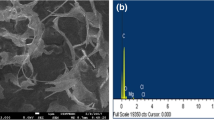Abstract
Polyhydroxyalakanote (PHA) was produced by the marine bacteria Paracoccus seriniphilus Strain E71. Three methods were used for screening PHA in this strain: (1) microscopic analysis, (2) specifically designed primers for amplify fragments of phaC gene from Gram negative bacteria, and (3) measurements using spectroscopy, calorimetry, thermogravimetry, and rheology. The polyhydroxyalkanoic acid synthase gene (phaC) sequence had 77% identity with the phaC gene of P. denitrificans PD1222 strain. Additionally, the translated sequence showed an 86% similarity with the amino acid sequence of the phaC gene N-terminal portion of the P. denitrificans PD1222 strain. Our phaC sequence was closely related to two phaC sequences that correspond to P. denitrificans; therefore, this is the first report of a sequence of phaC that codifies a poly-(3-hydroxyalkanoate) synthase class I, specifically a poly-beta-hydroxybutyrate polymerase from the marine bacteria Paracoccus seriniphilus. The polymer PHA of E71 melts at 167.86°C (T m), which corresponded to the fusion of the crystalline polymer and thermally degrades at 296.52°C, indicating that the biopolymer has good thermal stability. Rheology showed that this polymer behaves as a nonNewtonian fluid. All these characteristics suggest that the E71 strain produces a PHA that corresponds to the crystalline thermoplastic polymer PHB type.









Similar content being viewed by others
References
Altschul SF, Gish W, Miller W, Myers EW, Lipman DJ (1990) Basic local alignment search tool. Mol Biol 215:403–410
Altschul SF, Madden TL, Schäffer AA, Zhang J, Zhang Z, Miller W, Lipman DJ (1997) Gapped BLAST and PSI-BLAST: a new generation of protein database search programs. Nucleic Acids Res 25:3389–3402
Baumann P, Baumann L, Mandel M (1971) Taxonomy of marine bacteria: genus Benekea. J Bacteriol 107:268–294
Baumann P, Baumann L (1981) The marine gram-negative eubacteria: genera Photobacterium, Beneckea, Alteromonas, Pseudomonas, and Alcaligenes. In: Starr MP, Stolp H, Trüper HG, Balows A, Schlegel HG (eds) The prokaryotes: a handbook on habitats, isolation, and identification of bacteria, vol 2, 1st edn. Springer, New York, pp 1302–1331
Berlanga M, Montero MT, Hernández-Borrel J, Guerrero R (2006) Rapid spectrofluorometric screening of poly-hydroxyalkanoate-producing bacteria from microbial mats. Int Microbiol 9:95–102
Chen GQ (2002) Production and applications of microbial polyalkanoates. In: Chiellini E, Solaro R (eds) Biodegradable polymers and plastics. Springer, New York, pp 155–166
Giovannoni S (1991) The polymerase chain reaction. In: Stackebrandt E, Goodfellow M (eds) Nucleic acid techniques in bacterial systematics. Wiley, New York, pp 177–203
Helm D, Naumann D (1995) Identification of some bacterial cell components by FT-IR spectroscopy. FEMS Microbiol Lett 126:75–80
Kalia VP, Lal S, Cheema S (2007) Insight in to the phylogeny of polyhydroxyalkanoate biosynthesis: horizontal gene transfer. Gene 389:19–26
Khan ST, Takaichi S, Harayama S (2008) Paracoccus marinus sp. nov., an adonixanthin diglucoside-producing bacterium isolated from coastal seawater in Tokyo Bay. Int J Syst Evol Microbiol 58:383–386
Khanna S, Srivastava AK (2005) Recent advances in microbial polyhydroxyalkanoates. Process Biochem 40:607–619
Kim BY, Weon HY, Yoo SH, Kwon SW, Cho YH, Stackebrandt E, Go SJ (2006) Paracoccus homiensis sp. nov., isolated from a sea-sand sample. Int J Syst Evol Microbiol 56:2387–2390
Kolibachuck D, Miller A, Dennis D (1999) Cloning, molecular analysis, and expression of the Polyhydroxyalkanoic acid synthase (phaC) gene from Chromobacterium violaceum. Appl Envion Microbiol 65:3561–3665
Kranz RG, Gabbert KK, Locke TA, Madigan MT (1997) Polyhydroxyalkanoate production in Rhodobacter capsulatus: genes, mutants, expression, and physiology. Appl Envion Microbiol 63:3003–3009
Law JH, Slepecky RA (1961) Assay of poly-ß-hydroxybutyric acid. J Bacteriol 82:33–36
Liu ZP, Wang BJ, Liu XY, Dai X, Liu YH, Liu SJ (2008) Paracoccus halophilus sp. nov., isolated from marine sediment of the South China Sea, China, and emended description of genus Paracoccus (Davis 1969). Int J Syst Evol Microbiol 58:257–261
López-Cortés A, Lanz LA, García MJQ (2008) Screening and isolation of PHB-producing bacteria in a polluted marine microbial mat. Microb Ecol 56:112–120
Madison LL, Huisman GW (1999) Metabolic engineering of poly(3-hydroxyalkanoates): from DNA to plastic. Microbiol Mol Biol Rev 63:21–53
Misra AK, Thakur MS, Srinivas P, Karanth NG (2000) Screening of polyhydroxybutyrate-producing microorganisms using Fourier transform infrared spectroscopy. Biotechnol Lett 22:1217–1219
Mothes G, Ackermann JU, Babel W (2004) Mole fraction control of poly([R]-3-hydroxybutyrate-co-3-hydroxyvalerate) (PHBHV) synthesized by Paracoccus denitrificans. Eng Life Sci 4:247–251
Oliver JD, Colwell R (1973) Extractable lipids of gram-negative marine bacteria: phospholipid composition. J Bacteriol 114:897–908
Pal S, Paul AK (2002) Physico-chemical characteristics of poly(3-hydroxybutyric acid) isolated from Azotobacter chroococcum MAL-201. Curr Sci 83:1565–1568
Pukall R, Laroche M, Kroppenstedt RM, Schumann P, Stackebrandt E, Ulber R (2003) Paracoccus seriniphilus sp. nov., an L-serinedehydratase-producing coccus isolated from the marine bryozoan Bugula plumose. Int J Syst Evol Microbiol 53:443–447
Rothermich MM, Guerrero R, Lenz RW, Goodwin S (2000) Characterization, seasonal occurrence, and diel fluctuation of poly (hydroxyalkanoate) in photosynthetic microbial mats. Appl Environ Microbiol 66:4279–4291
Sambrook J, Russell DW (2001) Molecular cloning. A laboratory manual, vol 1. CSHL, Plymounth, p 2100
Shamala TR, Chandrashekar A, Vijayendra SVN, Kshama L (2003) Identification of polyhydroxyalkanoate (PHA)-producing Bacillus spp. using the polymerase chain reaction (PCR). J Appl Microbiol 94:369–374
Suriyamongkol P, Weselake R, Narine S, Moloney M, Shah S (2007) Biotechnological approaches for the production of polyhydroxyalkanoates in microorganisms and plants—a review. Biotechnol Adv 25:148–175
Ueda S, Matsumoto S, Takagi A, Yamane T (1992) Synthesis of poly (3-hydroxybutyrate-co-3-hydroxyvalerate from methanol and N-amyl alcohol by themethylotrophic bacteria Paracoccus denitrificans and Methylobacterium extorquens. Appl Environ Microbiol 58:3574–3579
Ueda S, Yabutani T, Maehara A, Yamane T (1996) Molecular analysis of the poly(3-hydroxyalkanoate) synthase gene from a methylotrophic bacterium, Paracoccus denitrificans. Journal of Bacteriology 178:774–779
Acknowledgments
This study was supported by CIBNOR (Project PC4.2) and SEP-CONACYT (Project 45914/A-1).
Author information
Authors and Affiliations
Corresponding author
Electronic supplementary material
Below is the link to the electronic supplementary material.
Rights and permissions
About this article
Cite this article
López-Cortés, A., Rodríguez-Fernández, O., Latisnere-Barragán, H. et al. Characterization of polyhydroxyalkanoate and the phaC gene of Paracoccus seriniphilus E71 strain isolated from a polluted marine microbial mat. World J Microbiol Biotechnol 26, 109–118 (2010). https://doi.org/10.1007/s11274-009-0149-5
Received:
Accepted:
Published:
Issue Date:
DOI: https://doi.org/10.1007/s11274-009-0149-5




